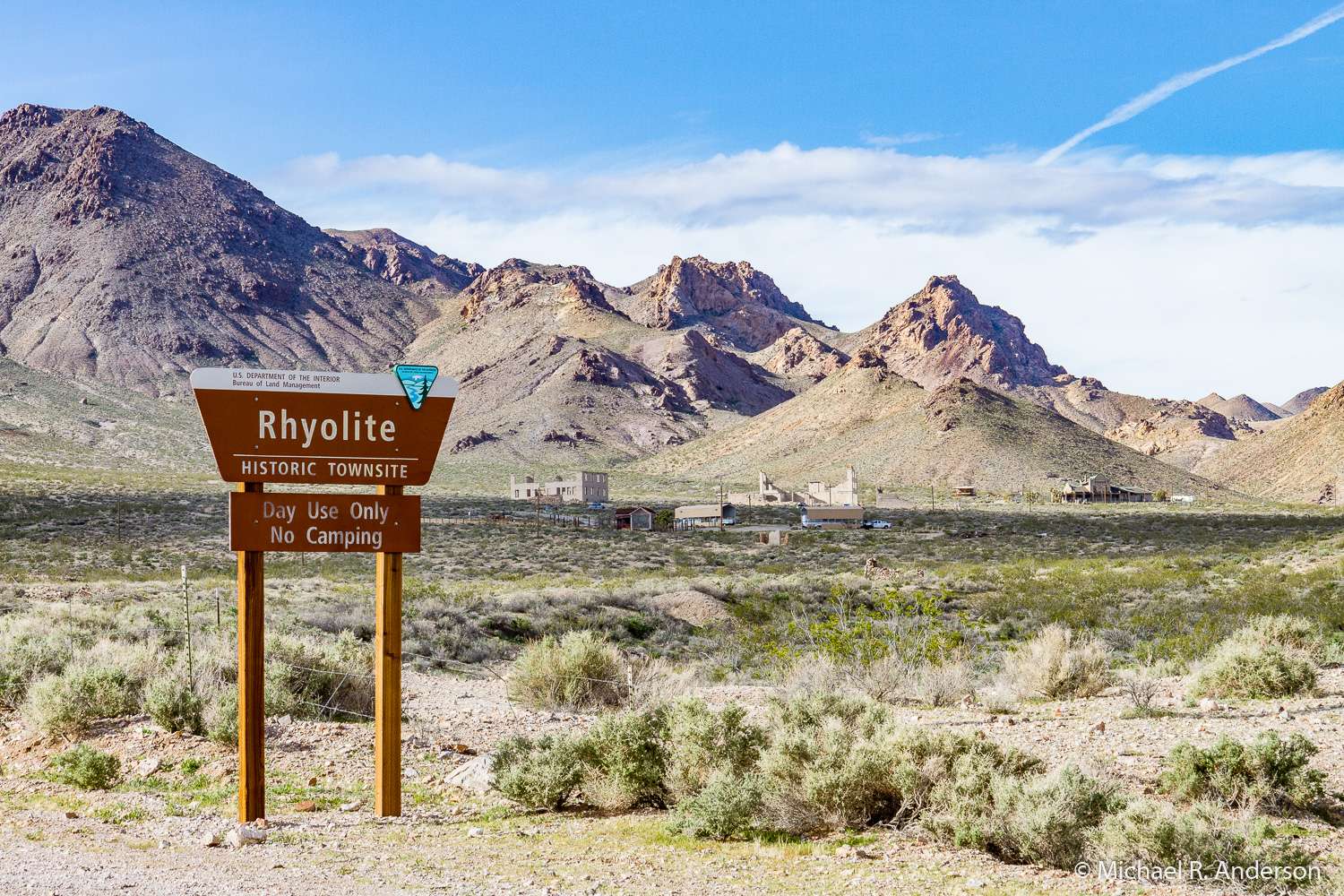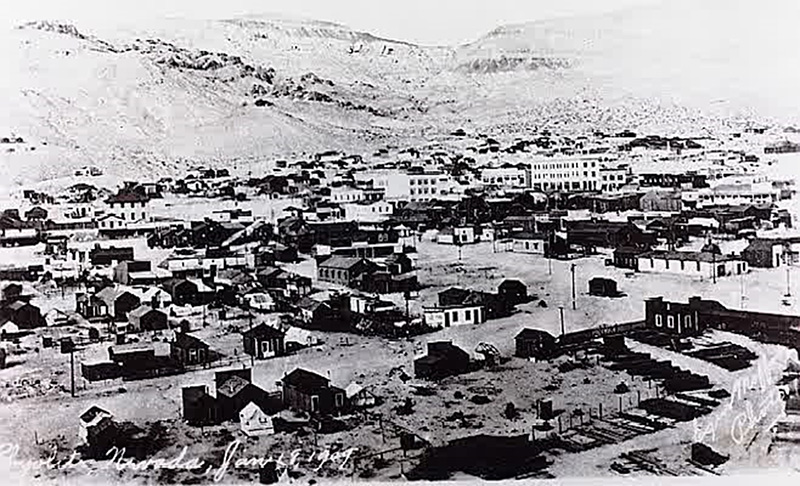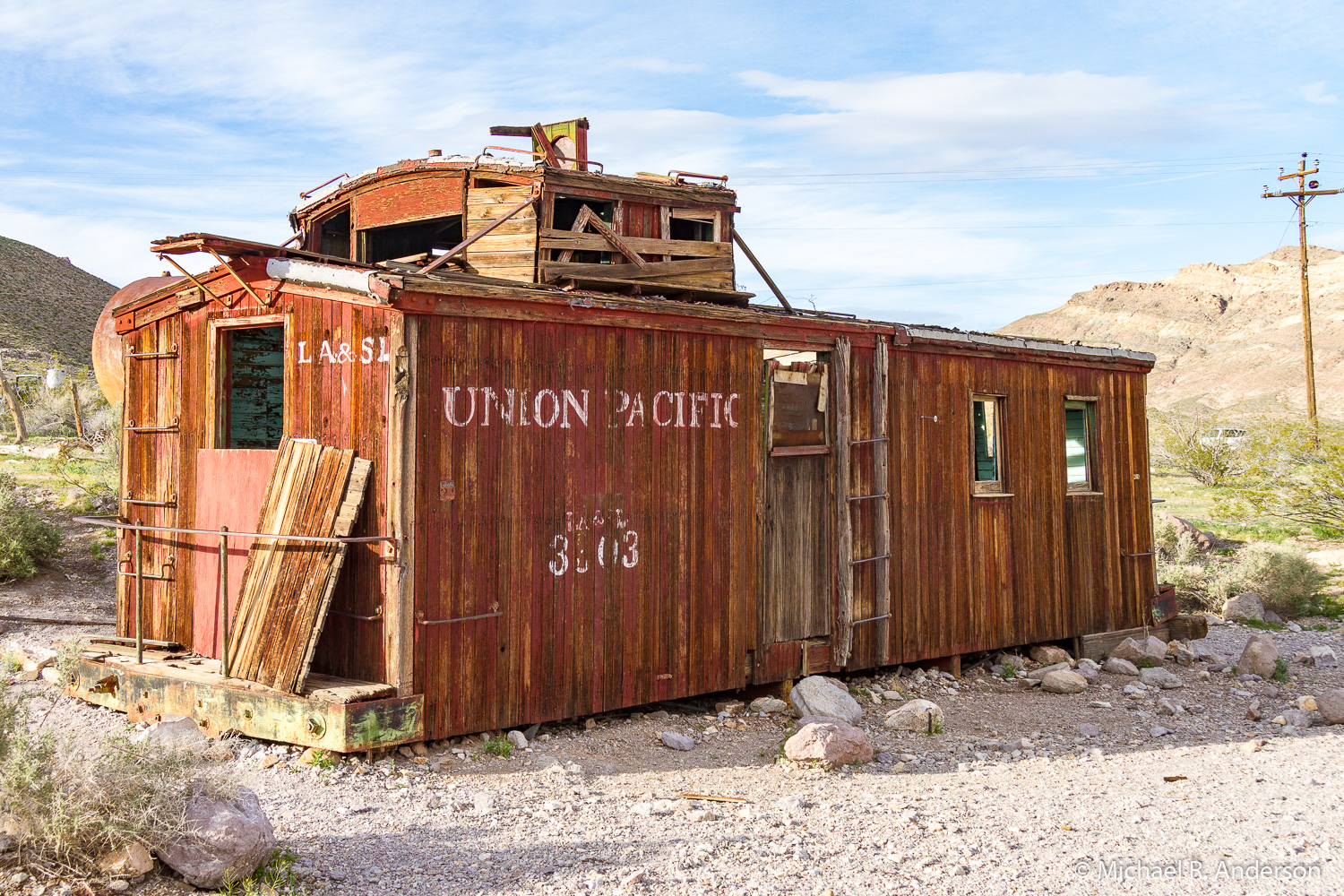“Ghost town.” What do you think of when you hear that phrase? I always picture old faded wooden buildings looking out on a dusty vacant street in a dry western landscape. But why a dry western landscape? Maybe I’m picturing that town where Gary Cooper faced the bad guys alone in High Noon. As we drove out of Beatty on Nevada State Route 374, I was not going to pass up the opportunity to visit the remains of Rhyolite, an old abandoned gold mining town — a ghost town.

Gold was discovered in Death Valley in the 1850s. As with the 1848 discovery in California, news quickly spread and miners descended on this desolate landscape in hopes of striking it rich. When ore was found and a claim was staked, other miners quickly moved in and staked claims on the adjoining land. Townsites were often laid out, lots were sold, and businesses moved in to serve the miners and capitalize on their good fortune. If the claim didn’t pay, and the vast majority of them did not pay, these towns were quickly abandoned and the residents moved on to set up a town near a more promising claim. Such was the life cycle of Rhyolite.

(Source: Wikimedia Commons)
Rhyolite was luckier than most of the mining towns because it was situated near the region’s most successful producer of gold, the Montgomery Shoshone Mine. More than 2000 other claims covered the area for 30 miles. The town was established in 1904. The population rose to 1200 in two weeks, 2500 in six months, and peaked at about 5000 in 1907-08. Richard Lingenfelter gives a thorough description of Rhyolite in his book, Death Valley and the Amargosa: A Land of Illusion. In its heyday it was home to 50 saloons, 19 lodging houses, 16 restaurants, a half-dozen barber shops, and 1 public bath. It had a newspaper, a school, a bank, three-story buildings, concrete sidewalks, electricity, running water, telephone and telegraph lines, and three railroads. The financial panic of 1907 and depletion of the richer ores combined to bring an end to this town. By 1910 only 611 residents remained. The mine closed in 1911 and electricity was shut off in 1916.
Today the old faded wooden buildings are almost all gone and the dusty street is paved to accommodate tourist vehicles. But, the remains of brick buildings such as the bank, a store, the school, and the train depot still stand. There’s also an old caboose missing its wheels. Some of the buildings are fenced and others are open for visitors to explore.

The most interesting structure in Rhyolite is Tom Kelly’s house, which is made out of over 50,000 bottles. Most are beer bottles that he obtained from the town’s 50 saloons. I guess it was easier for him to find beer bottles than wood in the desert.
I’ll have to admit that Rhyolite may not be my quintessential example of a ghost town, but it’s still an interesting place to visit. Since it’s on the road leading from Beatty to Death Valley National Park, you might as well stop in for a visit.
Christine Tyler
27 Apr 2017cool beer bottle house!
mranderson
27 Apr 2017Most of the bottles were from Anheuser-Busch. You can see their AB mark in the close-up photo.